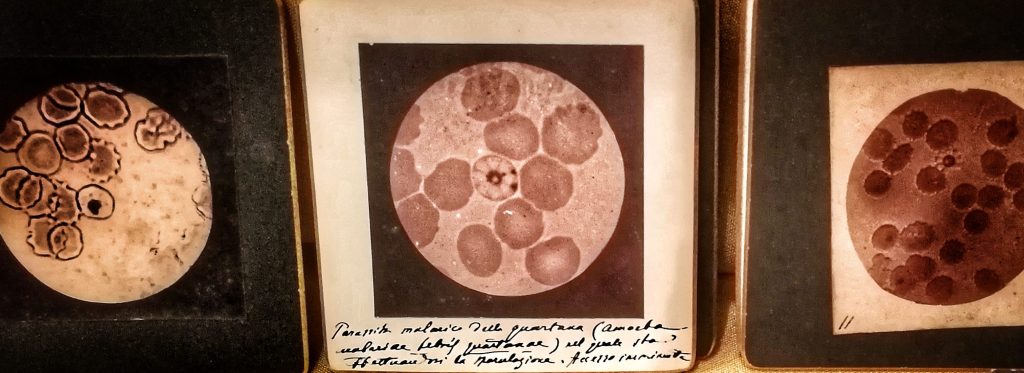The room is dedicated to Camillo Golgi (1843-1926), first Italian to win a Nobel Prize for Medicine in 1906, for the invention of a histological method, the black reaction or silver-chromium reaction, which laid the foundations of modern neuroscience.
Golgi’s studies on malaria demonstrated the constancy of the morphological changes between one fever attack and another (Golgi cycle); furthermore, Golgi proved that the patients’ fever attacks derives from the reproduction of the plasmodium (the parasite) that causes the disease (Golgi’s law).
The scientist also identified one of the fundamental components of the cell, the internal reticular apparatus, which later took the name of Golgi apparatus or Golgi body.
The room displays microscopic preparations, handwritten documents, drawings, instruments and the certificate of the Nobel Prize, assigned ex aequo to him and to his rival, Spanish scientist Santiago Ramón y Cajal.

Golgi’s malaria microscope slides
In the same room, you can observe items belonging to other scientists who trained in Pavia:
- Paolo Mantegazza (1831-1910), founder of the experimental pathology laboratory,
- Eusebio Oehl (1827-1903), who developed histology in Pavia and had Golgi and Bizzozero as students,
- Giacomo Sangalli (1821-1897), professor of pathological anatomy,
- Carlo Forlanini (1847-1918) who dedicated his entire life to the treatment of lung diseases and in particular of tuberculosis, devising a therapy based on the compression and immobilization of the lung by means of an artificial pneumothorax,
- Giulio Bizzozero (1846-1901) who was Golgi’s teacher,
- Adelchi Negri (1876-1912), brilliant but unfortunate student of Golgi’s, author of important studies on rabies,
- Edoardo Porro (1842-1902) who performed the first uterine-ovarian amputation during caesarean section, inventing a technique that saved countless lives.
